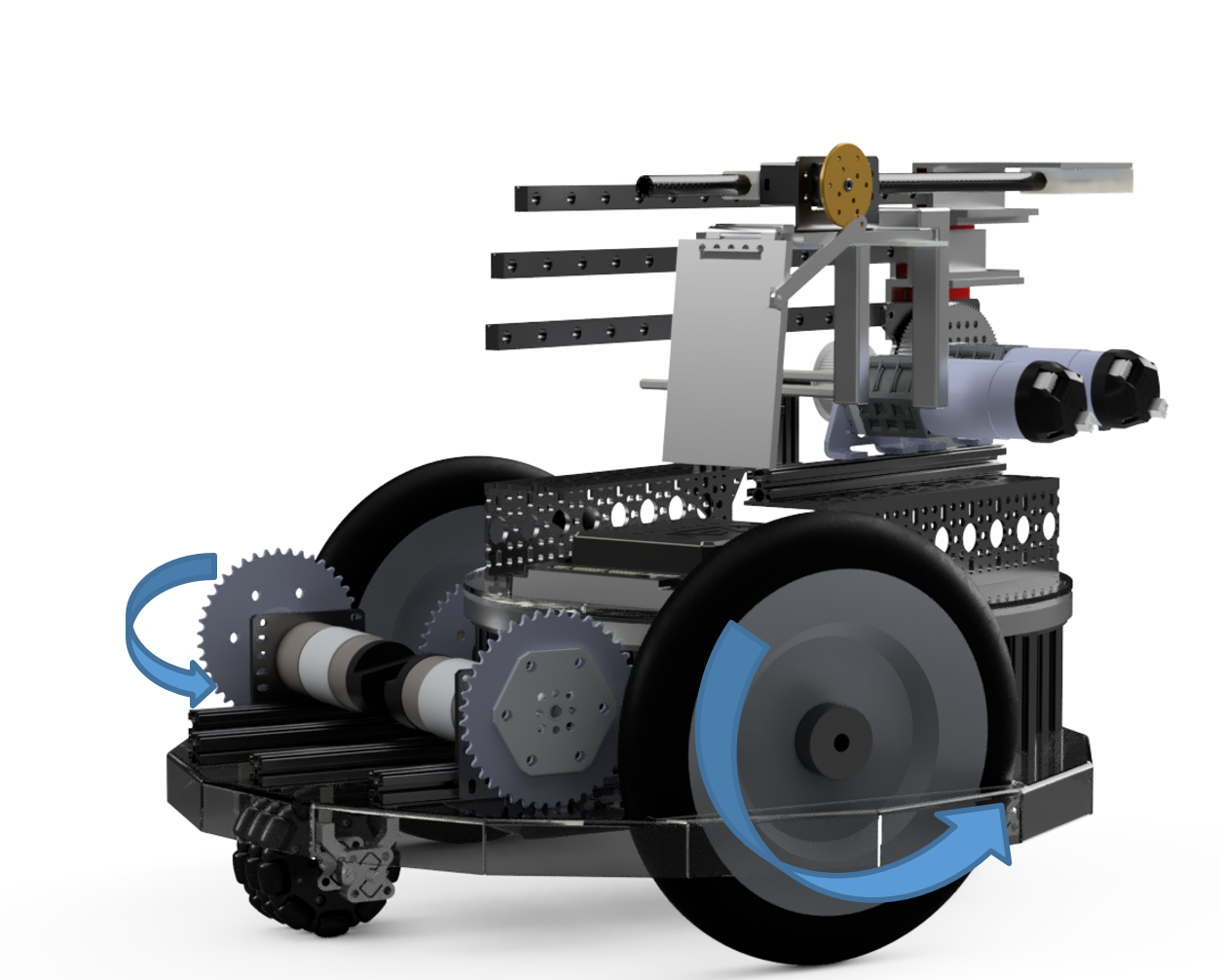Calculating Torque at the Drive-Train
Tags: think and innovatePersonhours: 6
Task: Calculate torque at the drive-train and analyze our choice of motors

During drive-testing, one issue we noticed was that our robot was not as fast as could be, and in a speed-based game, this is not ideal. So, we decided to calculate torque at the drive-train, which currently runs on two Neverest Classic 40 motors. Currently, we are looking to replace these motors with REV HD Hex Motors with a 3-part cartridge. As such, we will find the torque acting on the drive train with both these motors to identify whether replacing the motors is the best choice, and if so, what combinations of a cartridge we ought to use on the new motors.
Currently, we have 4 gear sprockets for the two 8-inch wheels on the chassis. However, since these are all of the same gear ratio, they do not need to be included in the calculations to find torque. The Classic 40 Neverest motors have a ratio of 40:1 and a stall torque of 2.47 Nm, both of which are values which can be found in the individual part specifications. Using this information, we can find that the torque acting on the drive train to be 2.47Nm * 40 which is a total rotational force of 98.8Nm.
The Neverest motors give a significantly high amount of torque so looking to reduce it would help us increase the drive-train's speed which is our intended goal. A good replacement would be the REV Hex motors with the planetary cartridge but choosing the type of cartridge is the challenge. Ideally, three 3:1 cartridges would give the least torque but this combination would lack too much control. Especially since our supply of these catridges is limited, we want to choose a combination which gives a "good" amount of torque but also produces a decent speed. Currently, the Neverest motors are not slow and we only want a little more speed on the drive-train. Taking this into account, we want to choose a combination which is closest to the 40:1 ration but still falls under it. So, a combination of 3:1, 4:1, and 5:1 cartridges would be the best choice since it provides a compounded gear ratio of 36:1. Considering the stall torque of the Hex motors to be 2.1 Nm, we can calculate the torque to be 2.1Nm * 36 75.6 Nm.
Next Steps
The hex motors with a 36:1 compounded gear ratio are not only the closest in ratio to the Neverest motors, but also have a significantly lower torque with enough to maintain good control. As such, we are going to replace the our current motors on the drive train with this specific cartridge. If we find that the drive-train's performance could be improved, we will find more cartridge combinations or go altogether with a different motor to improve control.
